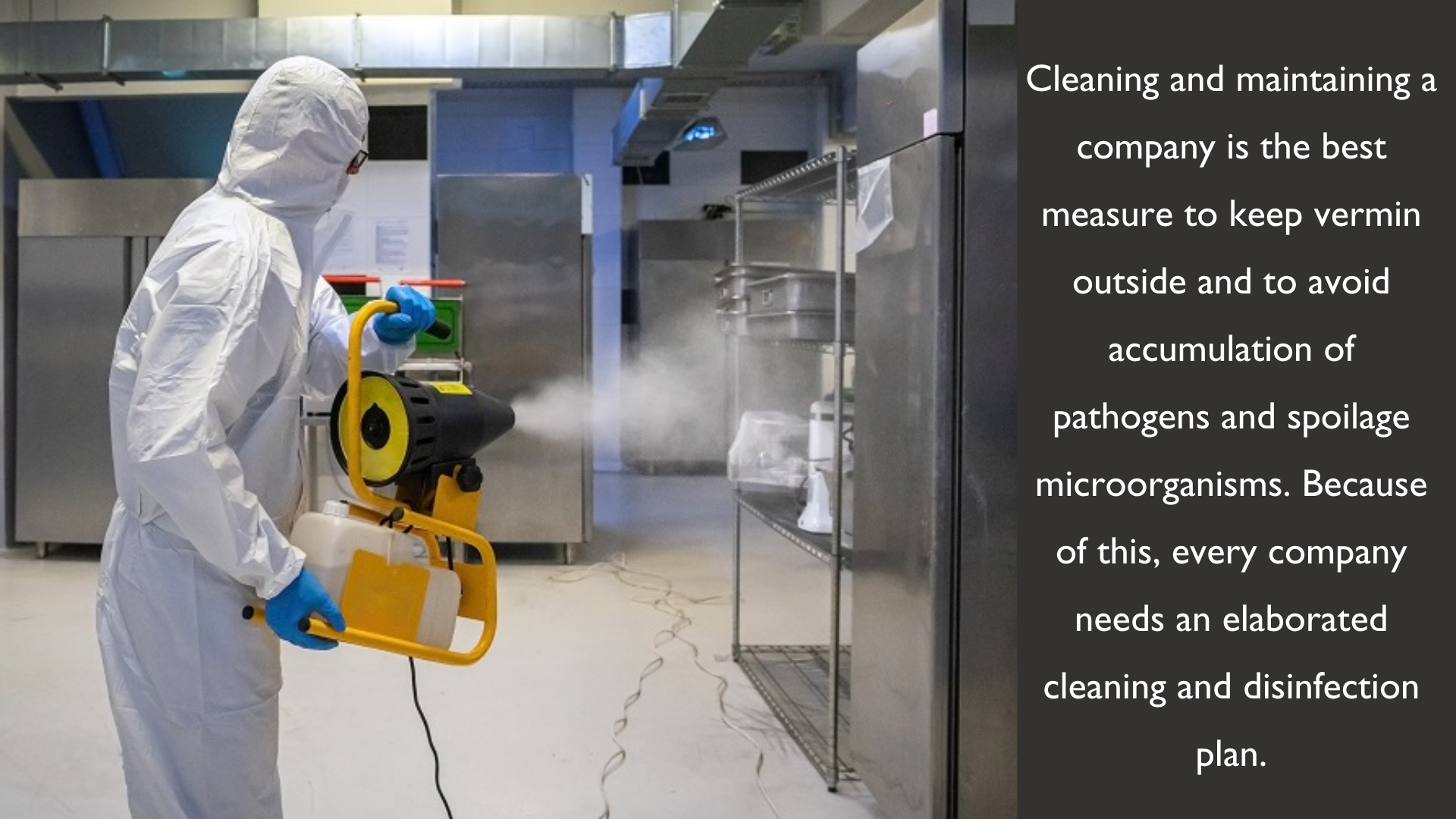
It is important to know that there is a clear difference between cleaning on the one hand and disinfection on the other hand.
Cleaning: the processes elaborated to remove dirt; after cleaning the surfaces are visual clean but micro-organisms can still be present.
Disinfection: the processes elaborated to kill the present microorganisms.
Cleaning and Disinfection Plan
The cleaning and disinfection plan must contain the following aspects:
What needs to be cleaned and disinfected.
How this has to be done (which activities need to be carried out and which equipment has to be used). For every complex cleaning and disinfection activity a reliable and approved procedure needs to be available.
When the cleaning and disinfection need to be carried out.
Who is responsible.
Registration of the executed cleaning and disinfection activities has to be kept up to date.
It is also very important to include cooling elements and evaporators in the cleaning and disinfection plan because due to the accumulation of dirt in combination with condensation, microorganisms can accumulate and form an important cause of contamination.
Material
The used disinfectants need to be approved by the government as a biocide. For detergents, one can choose (but no odour and not corrosive). The use of one disinfectant for a long period can lead to the resistance of certain microorganisms. Therefore, it is important to use on a regular base another disinfectant. Of every used product a safety filling cart and instructions for use need to be present. Detergents and disinfectants can only be present in the production and storage room during cleaning and disinfection.
The cleaning material (brush, wiper, etc) has to be synthetic or another material that is no cause of contamination. It has to be resistant to corrosion and the use of chemicals. The cleaning material has to be cleaned and disinfected regularly and included in the cleaning and disinfection plan. Separate cleaning material (different colours) needs to be used for the cleaning and disinfection of:
- Sanitary fittings
- Low care area (the area where contaminated foods are handled)
- High care area (the area where every contaminant that comes into the food, will be present in the end product. The product doesn’t undergo a treatment that can eliminate present contaminants.).
Execution of Cleaning And Disinfection
The best result is achieved when cleaning and disinfection are carried out in 2 separate steps. Therefore, the following schedule is used.
|
Preparation: |
First, the visible dirt (like packaging material, rests of products, etc) is removed with a brush or with water. When necessary, machines and apparatus have to be disassembled. |
|
Cleaning: |
Rinse with water. Carry out the real cleaning with an appropriate detergent. With this step fat and other dirt is removed and it is visually clean. |
|
Rinsing: |
Rinse with water to remove the dirt and the rest of the detergent, since soap can cause a bad functioning of the disinfectant. When there is still a lot of water present after rinsing, it should be removed since the water can dilute the disinfectant, which can result in bad disinfection. To avoid the food being contaminated with the disinfectant, everything is rinsed with potable water. |
|
Disinfection:
|
The present microorganisms are killed during disinfection. The disinfection is only effective when the proceeding cleaning was carried out properly because the remaining dirt will make the disinfectant inactive. |
Cleaning in place systems (CIP) use an analogous methodology. CIP-systems are closed systems that consist of piping, tanks, valves, pumps, etc that need to be cleaned and disinfected by a successive circulation of water, detergent, water, disinfectant and water. In this way no dismantlement is necessary.